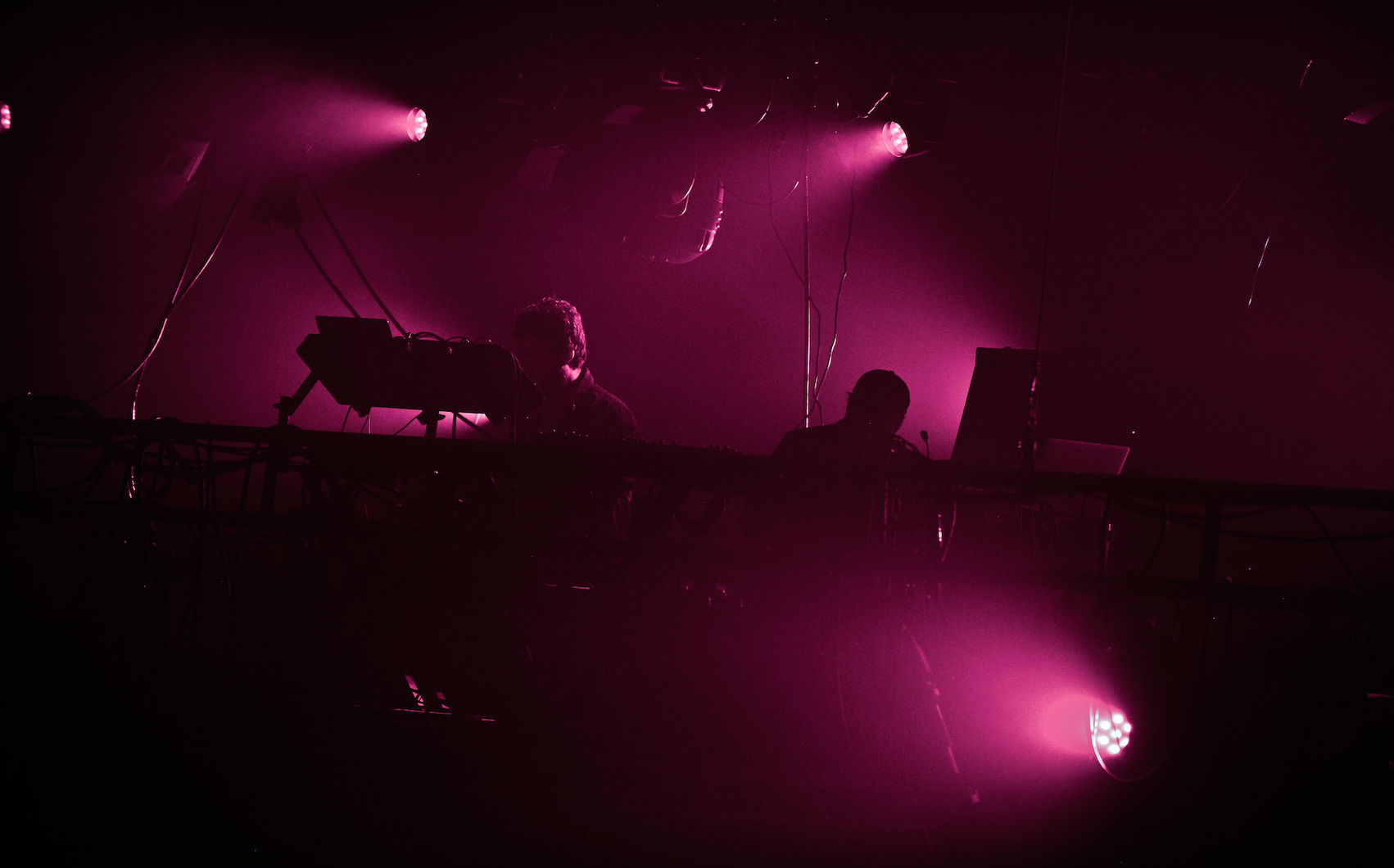We've seen Stranger Things... and heard the musical backstory
Synth-sensations Michael Stein & Kyle Dixon compose with the Seaboard RISE
When you listen to the music of Michael Stein and Kyle Dixon, you are bathed in lush electronic soundscapes and powered forward by dark, pulsing undercurrents. Their sound is ominous but also irresistible.
The duo composed the instantly recognizable soundtrack to Stranger Things, the Netflix show that is now a cultural phenomenon. Alongside Adam Jones and Mark Donica, the two childhood friends from Dallas are now performing as half of the band S U R V I V E at festivals all over the world. With their rise has come a welcome resurgence in the sound of classic synthesizers. We caught up with Michael Stein to learn more about his process and his favorite gear.
Michael’s first instrument as a child was a drum kit, but by 2000 Michael had developed a keen interest in building modular synths. “I remember going to analogue synth clubs in my early twenties, and everyone else at the meetings were forty or fifty year old men,” he says. Many of Michael’s favorite instruments for production are vintage synthesizers from the late 1970s and early 1980s: the Prophet-5, the Roland TR-808 and the ARP-2600.
While classic synths fascinate him, Michael describes himself as a “futurist rather than an analogue purist.” S U R V I V E always experiment with the latest plug-ins and software, combining old and new technology to produce a unique sound that’s retro yet futuristic. Their score for Stranger Things masterfully updates 1980s sci-fi and horror movie soundtracks for the 21st century while steering clear of cheap nostalgia.
<iframe src="https://open.spotify.com/embed/album/2l0rdHb97fQidl9dsOxE6B" width="300" height="300" frameborder="0" allowtransparency="true" allow="encrypted-media"></iframe>
Stranger Things 2 (Soundtrack for the Netflix Original Series)

Michael and Kyle's set-up combines classic synthesizers with cutting-edge gear.
In Michael and Kyle’s studio, cutting-edge hardware controllers sit beside their classic synthesizers. One prominent piece of gear is the Seaboard RISE, which Michael uses to explore and experiment with new ideas in organic ways.
“I always like to have the Seaboard RISE out when I watch the first pass or director’s cut of Stranger Things,” he says. “I pick a certain sound palette in Equator and just poke around on it. I often use the ribbon below the keys on the RISE so I don’t rely on muscle memory while I watch. It’s a fantastic moodboard that helps me discover new keys. I can experiment until I hear a note that fits, then I look down to see what I’m playing.”

In the second series of Stranger Things you can hear plenty of Seaboard RISE glides adding atmosphere to score. Michael also uses the Seaboard Block, the smaller cousin of the RISE to control the PPG Phonem soft-synth in live shows for choral glides. "I’m also really looking forward to using the RISE with the Deckard’s Dream synthesizer, which is MPE compatible! The Seaboard is bound to work its way into more of my work,” he says.
Adopting the Seaboard is just one way that Michael and Kyle are looking to the future. Recently the pair scored an atmospheric virtual reality series titled "Spheres" by Darren Aronofsky, which puts viewers in space to experience the collision of two black holes. And for the Sugar Mountain Festival the four-piece S U R V I V E experimented with the sensations of sound and taste, making “squishy, uncomfortable sounds” based on food.

Michael Stein and Kyle Dixon perform their atmospheric live interpretation of the music of Stranger Things at the Ace Hotel, LA (2017).
“We’re an explorative band, always trying something new in the studio,” Michael says. “Because we don’t use every creation right away, the process of making lots of material is valuable. We’ve even updated and reused songs that date all the way back to 2008.”
While their signature sound is instantly recognizable, SURVIVE finds inspiration in a huge range of material. “Each record has to have a cohesiveness and stand-alone sound. Our last album RR7349 was inspired by retro-horror and desert prog-rock. We recently made a record for Record Store Day inspired by the John Peel Sessions. Even in Stranger Things, different characters and areas like The Upside Down have their own distinct musical motifs.”
What are the pair up to now, other than preparing the music from Stranger Things for summer festivals? “We have a couple of soundtracks for TV and film coming up, and we’re also working on a new S U R V I V E album,” Michael says. “I’ve also been producing an album for BOAN, which I’m very excited for people to hear!” With each new project, Michael Stein and Kyle Dixon continue to explore ever-more thrilling sonic universes.
See Michael Stein and Kyle Dixon perform the music of Stranger Things live at Primavera Festival, Barcelona 30th May - 3rd June.
Join the ROLI community